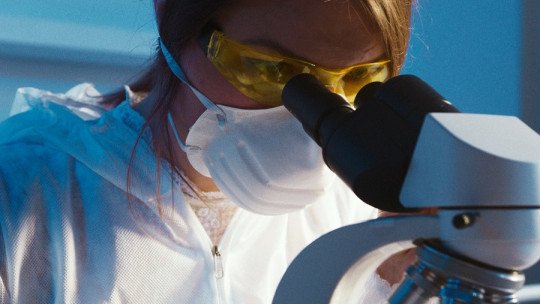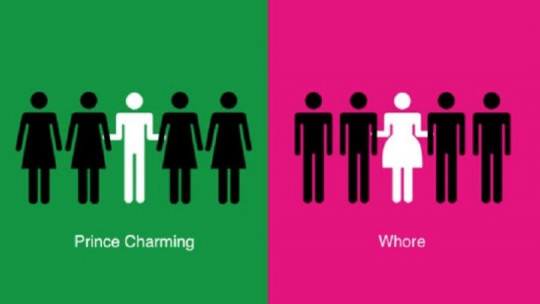All people are more or less aware of the importance of science as a fundamental discipline for the progress of humanity. It is research that helps us learn about phenomena that may have been dangerous or purely unknown, bringing us closer to them and how to deal with them. Therefore, it is assumed that it is an area in which impartiality, objectivity and equity should govern to achieve the best and most representative results.
However, behind this façade of neutrality, false beliefs and myths persist around the participation and recognition of roles in research that are different from those of the hegemonic people of our societies: the white, cisheterosexual man. An example is the gender biases that exist in the scientific community.
As we move forward as a diverse and plural society, it is essential to address these gender biases in science and work towards a more inclusive and equitable scientific environment. In this article, we will analyze five concrete examples of gender bias in the scientific field to deconstruct these false beliefs and advance feminism.
What are gender biases in science?
Gender biases refer to prejudices or stereotypes based on gender that affect decision-making, resource allocation, and recognition in the scientific field, to give a few examples. These biases manifest themselves in a variety of ways, from discrimination in research funding to the underrepresentation of women in leadership positions at scientific institutions.
Scientific research should be based on equal opportunity and free competition of ideas, but gender biases undermine these fundamental principles. These stereotypes can lead to a biased perception of the capabilities and achievements of female scientists resulting in the undervaluation of their work and the lack of deserved recognition.
5 examples of gender bias in science
Gender inequalities in science are not only unfair, they also limit the potential and diversity of scientific research. When half the population is systematically excluded, valuable insights and innovative solutions are being lost. Let’s look at some examples of these biases that lead to gender discrimination.
1. Discrimination in research funding
One of the most palpable examples of gender bias in science is manifested in the allocation of research funds. Numerous studies have revealed a significant disparity in funding awarded to female researchers compared to male researchers Despite having equally strong credentials and research projects, female scientists often face considerable obstacles in their search for funding.
The phenomenon of discrimination in research funding has deep roots in the misperception that women are less capable or less committed to scientific research. Funding applications from women scientists are evaluated with greater scrutiny, making it difficult for them to access the resources necessary to carry out innovative research. This bias perpetuates a vicious cycle, as lack of funding limits opportunities for female scientists to produce high-quality research, gain recognition, and advance in their academic careers.
To overcome this bias, it is crucial to implement policies that promote gender equality in research funding. This may include gender-blind review and evaluation in funding committees, as well as encouraging specific programs to support emerging female researchers.
Only through a conscious and equitable approach to research funding can we ensure that the talent of female scientists is not wasted and that science advances without gender-based barriers
2. Underrepresentation in leadership positions
The underrepresentation of women in leadership positions in scientific and academic institutions is another eloquent example of gender bias in science.
Despite the significant contributions of female scientists to research and teaching, it is rare to find women occupying leadership roles in academic departments, decision-making committees and governing bodies in the scientific world.
This phenomenon is the result of a series of systemic biases that operate at multiple levels. Deep-rooted stereotypes about gender roles have led to the perception that women are less suited to lead, and this is reflected in the lack of opportunities to advance in their careers Women are often expected to fulfill multiple roles, such as caregivers and professionals, which can make it difficult for them to dedicate themselves to leadership responsibilities.
The underrepresentation of women in leadership positions is not only a matter of justice and equity, but also has a detrimental impact on decision-making and policy development in the scientific community. Lack of diversity in leadership limits the range of perspectives and experiences that are taken into account, which can lead to less comprehensive or biased approaches in formulating policy and research strategies.
3. Gender stereotypes in research
Gender stereotypes in scientific research are an insidious manifestation of the biases that affect female scientists in their work environment. These stereotypes are based on deep-rooted cultural assumptions about people’s abilities and aptitudes based on their gender, and often undermine the confidence and perception of women in the scientific field. One of the most common gender stereotypes is the idea that women are less skilled in scientific disciplines that are perceived as “masculine” or “hard” as opposed to the “soft sciences” This stereotype leads to the underestimation of women’s talent and competence in fields such as physics, engineering or mathematics.
As a result, female scientists may face a constant struggle to be taken seriously and to prove their worth in these disciplines. Additionally, gender stereotypes can lead to the assignment of roles and tasks in a laboratory or research team based on gender, limiting opportunities for female scientists to participate in challenging or high-profile projects. The perception that women are better suited for assisting or team-working roles rather than leadership and decision-making can inhibit their professional growth. To counteract these stereotypes, it is essential to promote a culture of gender equality in scientific research. This involves actively challenging stereotypes, promoting diversity and inclusion, and highlighting the achievements of women in all fields of science. Additionally, mentoring and support policies can help female scientists overcome obstacles arising from gender stereotypes and advance their careers with confidence and determination.
4. Publication and recognition bias
The fourth example of gender bias in science is manifested in the publication and recognition of research. Despite contributing high-quality research, Female scientists often face obstacles in the publication process and, ultimately, in getting the recognition they deserve
Publication bias also manifests itself in the attribution of merit. Women scientists often face additional challenges in being recognized and cited in scientific literature. The work of female scientists may go unnoticed or be cited less than that of their male colleagues, which has a negative impact on their careers and funding opportunities.
To address this bias, it is essential that scientific journals and institutions promote gender-blind peer review, which helps ensure that papers are evaluated on their scientific merit rather than the gender identity of the authors. In addition, gender equality policies should be promoted in the attribution of credit and recognition of collaborative research.
5. Bias in data interpretation
One of the most common biases is gender confirmation bias, which involves the tendency to interpret data in ways that reinforce gender stereotypes. For example, in research on cognitive abilities, there may be a predisposition to highlight differences between men and women, even when the differences are minimal or not scientifically significant.
This bias can have a significant impact on public perception of research and policymaking When results are presented in a biased way, it can reinforce harmful stereotypes and lead to a misunderstanding of women’s capabilities in science and other fields.
Furthermore, the lack of focus on gender in scientific data collection and analysis can lead to underestimation of gender differences in research. By not accounting for gender as a variable, you risk missing important patterns that could shed light on disparities and opportunities in science.









